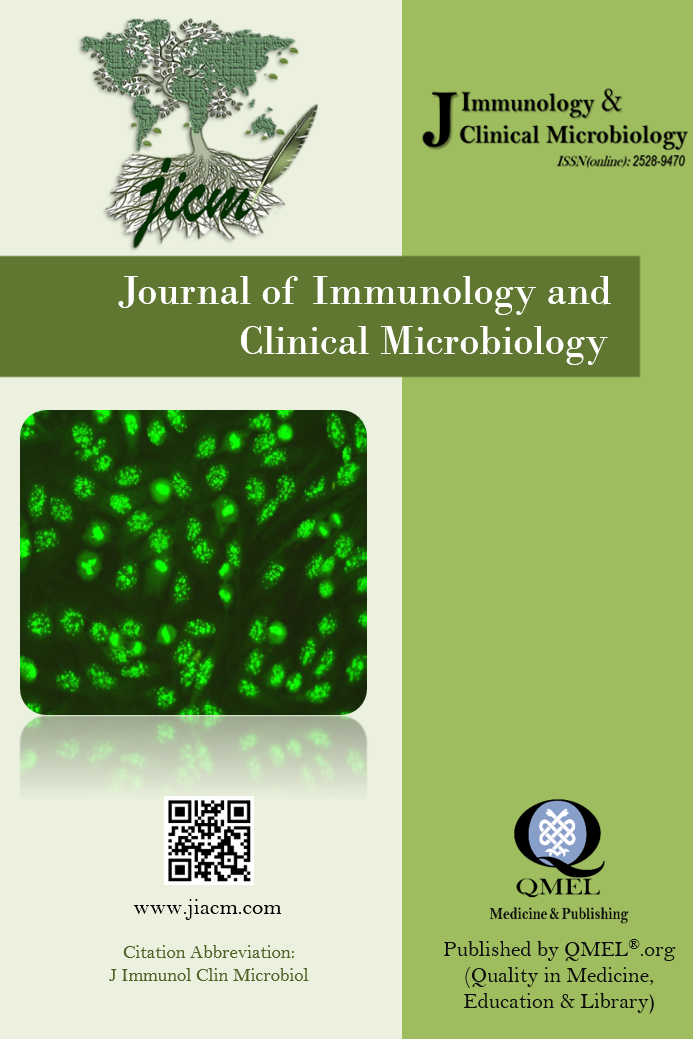Effect of oxidative stress on glutathione reductase activity of Escherichia coli clinical isolates from patients with urinary tract infection
Background: Urinary tract infection (UTI) is frequently encountered by female population where the episode of occurrence increases with advancing age. Escherichia coli, a common UTI causing organism, retains glutathione defense mechanisms that may allow the organism to withstand host oxidative immune response as well as the harsh physiological environment of urinary tract. The aim of this study was to analyze glutathione reductase (GR) activity of UTI causing E. coli under stressful condition. Material and Methods: E. coli isolates from urine samples of UTI female patients of different ages were sampled. Samples of isolated E. coli were grown in conditions with and without oxidative stress where the stressful condition was induced by hydrogen peroxide (H2O2). In both conditions measurement of reduced glutathione level of the isolates was performed calorimetrically using microplate reader assay. Results: Samples from elderly patients showed that GSH level significantly altered, the value of GSH (mM/mg) are 5.01±0.48 and 5.20±0.64 in normal and under stressful condition respectively, which showed increase of GSH level by 3.83% (p = 0.024) under oxidative stress condition. On the other hand, in case of adult patients, GSH (mM/mg) level found to be decreased by 5.11% (p = 0.011) with the values of 5.08±0.1 and 4.82±0.18 respectively for normal and stressed condition. Conclusion: Our data suggesting an association of GR activity with patient’s age, may signify that E. coli isolates respond differently to oxidative stressful environment in different age-related physiological changes and could help to uncover ways to gain better insight into E. coli pathogenesis of UTI predominance in aged population.
Keywords:
Aged, Escherichia coli, glutathione reductase, oxidative stress reduced glutathione (GSH), Urinary tract infections (UTI),
___
- 1. Bergeron CR, Prussing C, Boerlin P, Daignault D, Dutil L, Reid-Smith RJ et al. Chicken as reservoir for extraintestinal pathogenic Escherichia coli in humans, Canada. Emerg Infect Dis. 2012;18(3):415-421.
- 2. Rahman SR, Ahmed MF, Begum A. Occurrence of urinary tract infection in adolescent and adult women of shanty town in Dhaka City, Bangladesh. Ethiop J Health Sci. 2014;24(2):145-152.
- 3. Muralidharan S, Mandrekar P. Cellular stress response and innate immune signaling: integrating pathways in host defense and inflammation. J Leukoc Biol. 2013;94(6):1167-84.
- 4. Aubron C, Glodt J, Matar C, Huet O, Borderie D, Dobrindt U, et al. Variation in endogenous oxidative stress in Escherichia coli natural isolates during growth in urine. BMC microbiol. 2012;12:120.
- 5. Staykova S. Urinary tract infections in geriatric patients. WebmedCentral Nephrology. 2013;4(1):WMC003968.
- 6. Ferguson GP, Booth IR. Importance of glutathione for growth and survival of Escherichia coli cells: detoxification of methylglyoxal and maintenance of intracellular K+. J Bacteriol. 1998;180(16):4314-4318.
- 7. Nerurkar A, Solanky P, Naik SS. Bacterial pathogens in urinary tract infection and antibiotic susceptibility pattern. J Pharm Biomed Sci. 2012;21(21):1-3.
- 8. Lowry OH, Rosebrough NJ, Farr AL, Randall RJ. Protein measurement with the Folin phenol reagent. J Biol Chem. 1951;193(1):265-275.
- 9. Chesney JA, Eaton JW, Mahoney JR. Bacterial glutathione: a sacrificial defense against chlorine compounds. J Bacteriol. 1996;178(7):2131-2135.
- 10. Åslund F, Zheng M, Beckwith J, Storz G. Regulation of the OxyR transcription factor by hydrogen peroxide and the cellular thiol—disulfide status. Proc Natl Acad Sci USA. 1999;96(11):6161-6165.
- 11. Maloney C, Oliver ML. Effect of local conjugated estrogens on vaginal pH in elderly women. J Am Med Dir Assoc. 2001;2(2):51-55.
- 12. Raz R. Urinary tract infection in postmenopausal women. Korean J Urol. 2011;52(12):801-808.
- 13. Tree JJ, Ulett GC, Ong C-LY, Trott DJ, McEwan AG, Schembri MA. Trade-off between iron uptake and protection against oxidative stress: deletion of cueO promotes uropathogenic Escherichia coli virulence in a mouse model of urinary tract infection. J Bacteriol. 2008;190(20):6909-6912.
- 14. Enaillon O, Skurnik D, Picard B, Denamur E. The population genetics of commensal Escherichia coli. Nat Rev Microbiol. 2010;8(3):207-217.
- 15. Alizade H, Ghanbarpour R, Nekoubin M. Phylogenetic of shiga toxin-producing Escherichia coli and atypical enteropathogenic Escherichia coli strains isolated from human and cattle in Kerman, Iran. Int J Enteric Pathog. 2014;2(1):e15195.
- 16. Chowdhury FA, Islam MN, Saha A, Mahboob S, Mosaddek ASM, Faruque MO, et al. Purification, extraction and visualization of lipopolysaccharide of Escherichia coli from urine samples of patients with urinary tract infection. Avicenna J Clin Microb Infec. 2015;2(4):e31990.
- 17. Souza RB, Trevisol DJ, Schuelter-Trevisol F. Bacterial sensitivity to fosfomycin in pregnant women with urinary infection. Braz J Infect Dis. 2015;19(3):319-323.
- Yayın Aralığı: Yılda 4 Sayı
- Başlangıç: 2016
- Yayıncı: Erkan YULA
